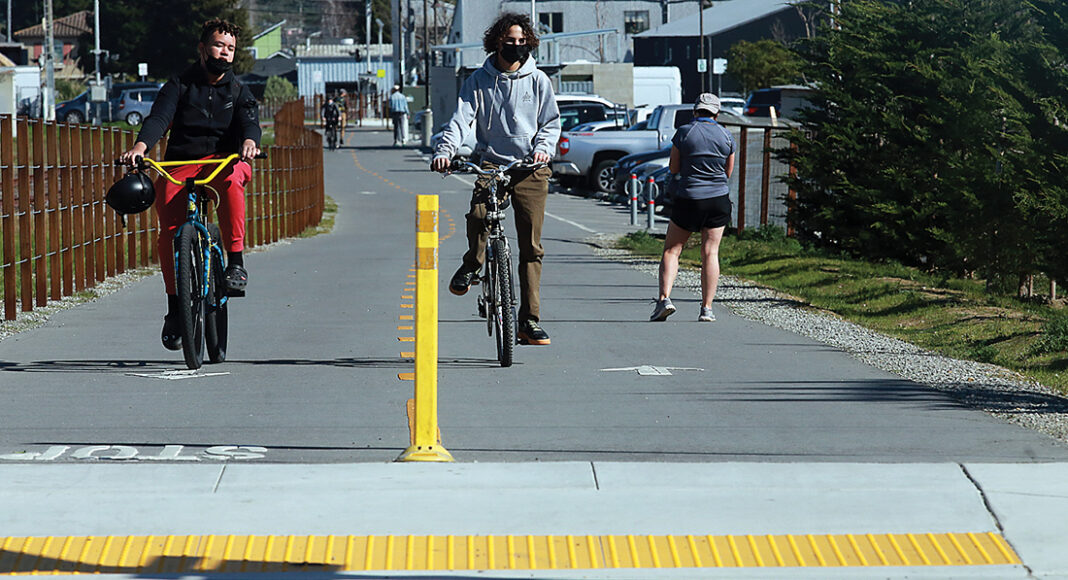In June, Santa Cruz County voters might be able to state their preference on what has become one of the region’s most contentious issues in the past decade: the future of the county’s 32-mile rail line.
On the ballot, voters will be asked whether they support amending the general plan to prioritize the development of a bike and pedestrian trail, while preserving the rail for possible future use through “railbanking.”
Greenway Santa Cruz is the nonprofit that is advocating for converting the section from Lee Road in Watsonville to the San Lorenzo Bridge in Santa Cruz into a walking and biking path. The group has collected 13,315 verified signatures on a petition, more than enough to place it on the June 7 ballot. The trail they envision, they say, will provide a safe way to exercise and traverse the county, while keeping vehicles off the road while protecting wildlife habitats.
At the same time, groups such as Santa Cruz County Friends of the Rail and Trail are hoping to create a walking and biking path alongside a countywide passenger rail system that could conceivably connect to Bay Area transportation. Like their counterparts, they say the plan will reduce vehicle use, thereby reducing greenhouse gasses and global warming, and give residents a new transportation option
Both groups state with equal incredulity that their opponents’ assertions are absurd. These discussions have festered for years as elected leaders try to solve the issue.
“I’m disappointed that after all these years of study and discussion, we continue to have such deeply entrenched factions on how to best use the rail corridor,” Supervisor Bruce McPherson said.
The key issue, McPherson added, is how to best move high volumes of commuters.
The supervisors approved the item for the election, while at the same time asking for a report on how the changes would affect housing development, parks, agriculture, schools and the County’s general plan, along with land use.
The item passed 4-1, with Supervisor Zach Friend recusing himself because he lives close to the tracks and therefore has a financial conflict.
When the supervisors mull the issue after receiving the report in March, they can either immediately adopt the initiative into the County code or—the more likely scenario—send it to voters for the June 7 election.
If approved by voters, it will change the County’s general plan, with a focus solely on developing the trail. It would also mean that plans for the rail line will not move forward, at least in the short term, said County spokesman Jason Hoppin.
Jack Brown, who said he was one of 170 volunteers who helped gather the signatures, said the number was a record for the county.
“I’m just really really proud of that,” he said. “This is the first time we get to have a direct vote on what’s happening with the corridor.”
Kyle Kelly expressed concern that sidelining rail development will alter plans for transit-oriented development in favor of infrastructure that favors personal vehicles.
“The reality is that we’re not going to get out of our climate situation without actually building high-density housing near transit,” he said. “We can do that with buses, we can do that with rail, and I’d really like to see us move forward and not be in the log jam we’ve been in.”
The petition was certified on Monday. Proponents gathered a total of 16,125 signatures, and after the County Clerk certified 13,315—more than 1,000 over the minimum required—the petition was certified, County Administrative Officer Carlos Palacios said.













